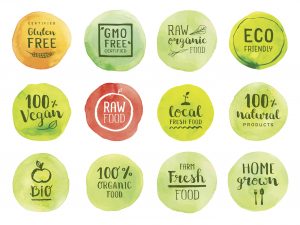Poop.
Shit.
It’s everywhere.
And biological.
In Christchurch, New Zealand, vomit and fecal contamination has forced the closure of Christchurch’s public pools 178 times during 2017.
The Christchurch City Council has taken steps to reduce closures across its three indoor facilities. This has led to a 20 per cent drop in closures this year compared to 2016 when the pools were closed 224 times.
Pioneer pool in Spreydon was the hardest hit, experiencing 79 closures, including 50 “code browns” and 26 vomiting incidents. Pioneer pool was closed 93 times in 2016.
Most incidents happened in the leisure pool, which was closed 52 times, followed by the teach pool with 20 closures.
With those kind of numbers, should there be a sad poop emoji to go with the smiling pile of poop emoji?
Barbara Ortutay of USA Today reports that the Unicode Consortium is tasked with setting the global standard for the icons. It’s a heady responsibility and it can take years from inspiration — Hey, why isn’t there a dumpling? — to a new symbol being added to our phones.
That’s because deciding whether a googly-eyed turd should express a wider range of emotions is not the frivolous undertaking it might appear to be. Picking the newest additions to our roster of cartoonish glyphs, from deciding on their appearance to negotiating rules that allow vampires but bar Robert Pattinson’s or Dracula’s likeness, actually has consequences for modern communication.
 Not since the printing press has something changed written language as much as emojis have, says Lauren Collister, a scholarly communications librarian at the University of Pittsburgh.
Not since the printing press has something changed written language as much as emojis have, says Lauren Collister, a scholarly communications librarian at the University of Pittsburgh.
“Emoji is one way language is growing,” she says. “When it stops growing and adapting, that’s when a language dies.”
So full congrats to the New York Daily Post, whose front-page this morning slammed the immigration comments of so-called U.S. President Donald Trump with an appropriate emoji of its own.
According to the Washington Post, which first reported the story, President Trump grew frustrated with lawmakers Thursday in the Oval Office when they discussed protecting immigrants from Haiti, El Salvador and African countries as part of a bipartisan immigration deal, according to several people briefed on the meeting.
“Why are we having all these people from shithole countries come here?” Trump said, according to these people, referring to countries mentioned by the lawmakers.
Trump then suggested that the United States should instead bring more people from countries such as Norway, whose prime minister he met with Wednesday. The president, according to a White House official, also suggested he would be open to more immigrants from Asian countries because he felt they help the United States economically.
In addition, the president singled out Haiti, telling lawmakers that immigrants from that country must be left out of any deal, these people said.
“Why do we need more Haitians?” Trump said, according to people familiar with the meeting. “Take them out.”
George Washington said in 1783, “The bosom of America is open to receive not only the opulent & respectable Stranger, but the oppressed & persecuted of all Nations & Religions; whom we shall wellcome to a participation of all our rights & privileges” (except for colored people which was sorta dumb).
Maybe Jimmy Buffett got it.
Buffet’s 1978 album, Son of a Son of a Sailor, was one of the first 8-tracks I bought while on vacation in Florida when I was 15-years-old, and it included the track Manana, which weirdly applies to Trump.
She said I can’t go back to America soon
It’s so goddamn cold it’s gonna snow until June
Yeah, they’re freezin’ up in Buffalo stuck in their cars
And I’m lyin’ here ‘neath the sun and the stars.
Customs man tell her that she’s gotta leave
She’s got a plan hidden up her shrewd sleeve
Wants to find her a captain, a man of strong mind
And any direction he blows will be fine.
Please don’t say manana if you don’t mean it
I have heard those words for so very long
Don’t try to describe the ocean if you’ve never seen it
Don’t ever forget that you just may wind up being wrong.
Tried and I tried but I don’t understand
Never seems to work out the way I had it planned
Hanging out at a marina when Steve Martin called
Singin’ anybody there really want to get small.
But women and water are in short supply
There’s not enough dope for us all to get high
I hear it gets better, that’s what they say
As soon as we sail on to Cane Garden Bay.
Please don’t say manana if you don’t mean it
I have heard your lines for so very long
Don’t try to describe the scenery if you’ve never seen it
Don’t ever forget that you just may wind up in my song.
Called all my friends on those cheap nightly rates
Sure was good to talk to the old United States
While the lights of St. Thomas lie twenty miles west
I see General Electric’s still doing their best.
I’ve got to head this boat south pretty soon
New album’s old and I’m fresh out of tunes
But I know that I’ll get ’em, I know that they’ll come
Through the people and places and Caldwood’s Rum
So please don’t say manana if you don’t mean it
I have done your lines for so very long
Don’t try to describe a Kiss concert if you’ve never seen it
Don’t ever forget that you just may wind up being gonged
And I hope Anita Bryant never does one of my songs.













